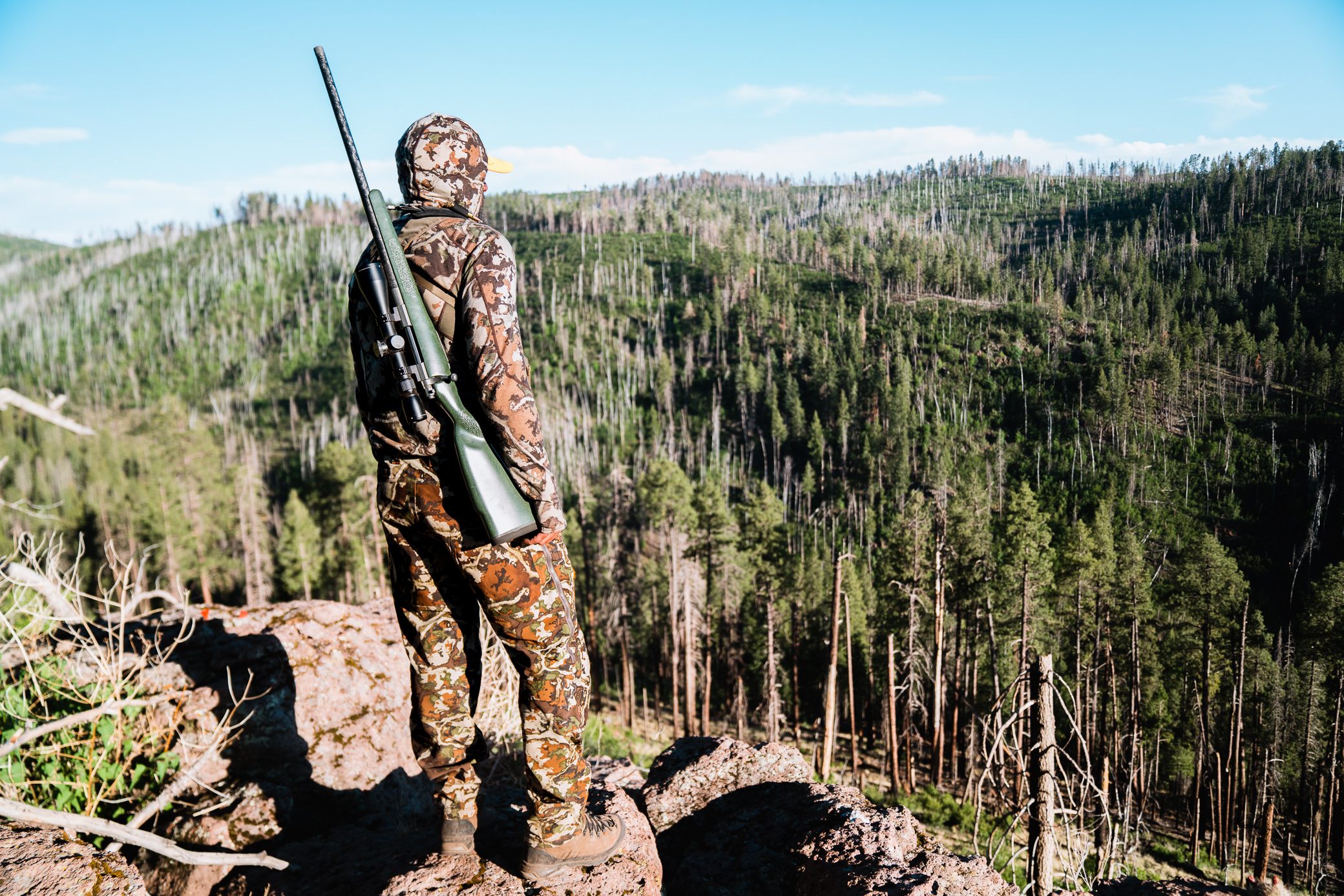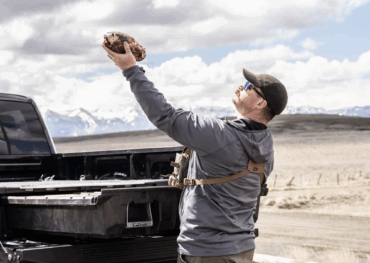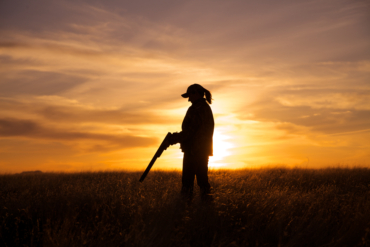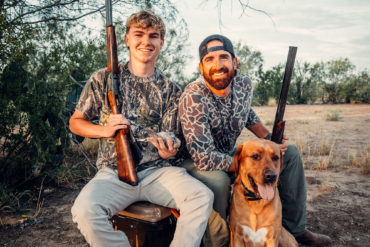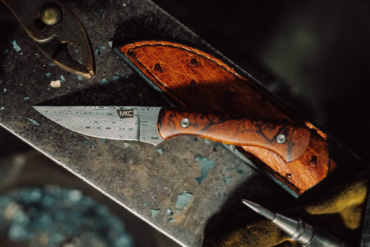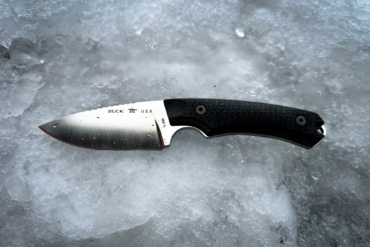Spring bear season is coming in hot. It’s time to stretch the legs and dust off the hunting gear. Wrapping your tag around a spring bear is no easy feat, though.
I’ve been successfully pursuing black bears now for about 10 years and have failed more times than I can think along the way. Between my own setbacks and watching others struggle in the spring bear woods, I’ve noticed a pattern. There are a few constants that seem to always end with an unfilled bear tag.
With any hope, keeping these things on your radar will help you avoid going home with a not-so-heavy backpack.
For the purpose of this article, I’m going to focus on spot-and-stalk bear hunting, as that is the most easily accessible type of bear hunting for most people.
Do Your Homework — Spring Bear Class Is in Session
The very first most common mistake I’ve seen others make when spring bear hunting is not learning about their food, how crucial elevation is in that equation, their habits, and honestly, just their overall biology as a whole.
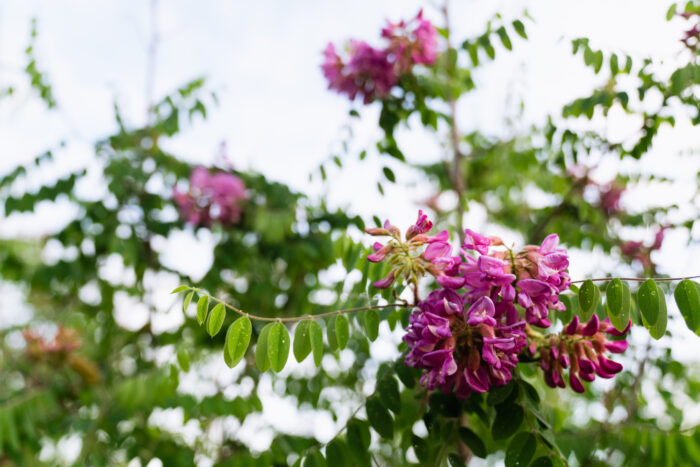
I get it. Not everyone wants to sit down and read nerdy bear biology reports or do research on what foods they prefer and learn how to identify them.
What degree of slopes do they prefer to den at, what elevation do most bears den at, snowlines, or what the average date is that most bears emerge from the said den? I guarantee it’s not for everyone. What I also guarantee, though, is that the people that do pay attention to these things are finding bears on a regular basis.
The above data will vary from state to state. Learn about where you’re hunting specifically.
The hardest part about bear hunting, no matter whether it is spring or fall, is being able to find bears. In order to find them consistently, you need to educate yourself. So, whether it’s by way of biology reports, books, or simply studying what bears are doing while you’re watching them, take notes. They’ll pay off big time in the end.
Don’t Burn Out — Early Bear Season Can Be Slow
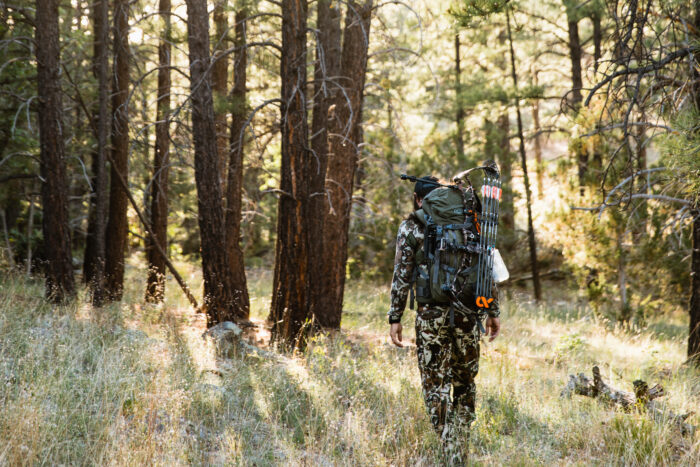
It’s the same every year for me. Come early spring, I am so ready to hit the ground running and start looking for bears it almost hurts, especially after sitting around throughout the winter months.
In my early years, I used to go hard right out of the gate. Every chance I’d get there was bear country beneath my feet. And by the time the hunting got real good, had I not filled a tag yet, I’d honestly be somewhat burnt out. It was hard to keep up optimism and keep going.
Early season can be great, and I prefer it, but things are no doubt slower on the bear front that time of year. The bears just aren’t moving as much as they will later in the spring. And depending on how early you go, many bears might not have even emerged from their dens.
Keep this in mind when planning hunts, and don’t beat yourself up if you’re out early and are having a rough go. If you are out in the early season, keep a marathon pace. This is not the time for sprinting.
Not So Fast — Let a Spot Work
Bear hunting can be downright boring 90% of the time. You may go days without glassing up a bear, and in all honesty, you may not even see one your entire hunt. Because of this lack of positive reinforcement, the veil of patience we have is oftentimes stretched to a point where a simple breath could break it.
This causes hunters to move around too much. Jumping from spot to spot before giving it a chance to work and show them its secrets.
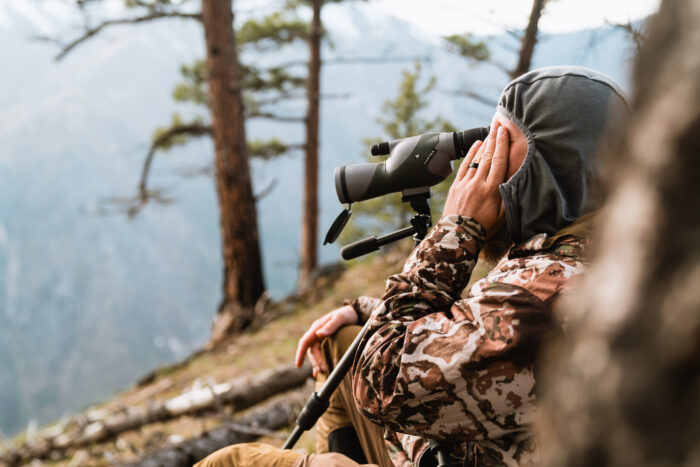
I’m not saying don’t be mobile. I am saying you don’t just get up after 15-20 minutes of glassing, though. This is something I see folks do all of the time. They get antsy. Give it an hour at least in a spot before thinking about pressing on or changing angles.
Try to do most of your moving around during the day, too. Come evening (aka, prime time), pop a squat, hunker in, and bleed a spot for all it’s worth.
Shot Placement: A Bear Is Not a Deer
Proper shot placement on black bears is another common mistake I’ve witnessed throughout the years. Many of us grew up deer hunting and have shot placement on deer ingrained into our heads. A black bear is not a deer, though, and they shouldn’t be aimed at as such.
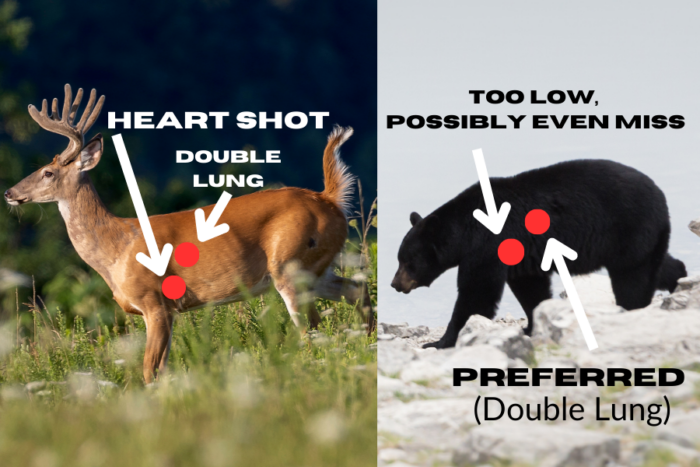
The fact of the matter is that the vitals sit a little further back on a black bear than they do on a deer, and they have completely different body shapes. A deer’s underside sits fairly parallel to the ground while a bear’s underside does not.
Toward the armpit, where most would aim for a heart shot on a deer, a bear’s underside goes upward. It may look even to the ground because of the fur, but it’s not. That thick and sometimes long hide on a bear accounts for bears being wounded and even lost altogether from hunters aiming too low.
On a black bear, the easiest way to describe the best place to aim is “middle of the middle.” So, at the halfway point from the front of the nose (head straight out) to the tail and then the halfway point between the bottom and top of the bear. Aiming here equals a cooler full of bear meat every time.
Final Words on Spring Bear
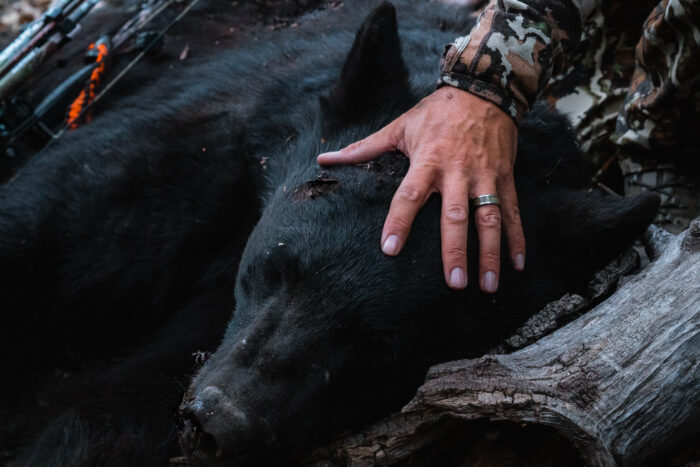
Promising you that you’ll fill your spring bear tag this season with these tips is not something I can do. What I can promise you, though, is this. They’ll for damn sure get you closer and on the right track. The information in this article is from real-life bear-hunting experiences. It’s not the only way to do things, but it’s all proven time and time again.
So, let’s get ready to shake the dust off of our hunting gear and soak in some adventure. Not to mention getting a chance at snagging some of the best wild game meat there is: Ursus americanus.
